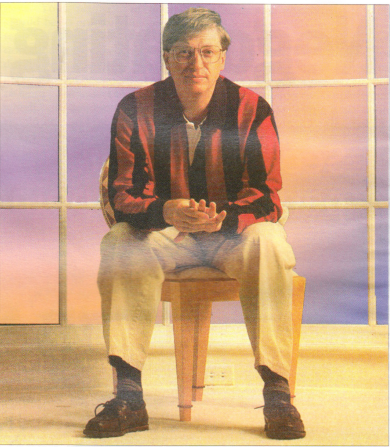Bill Gates’ personal fortune is estimated at US$ 29 billion (equal to 9% of India’s gross domestic product). Microsoft Corporation controls 80% of the world’s market for personal computer (PC) operating systems. In application software, its products (Word for Windows, Excel, Power Points etc) account for more than 60% of their respective market segments. The company claims to have a staggering 75% share of Indian market for operating systems. India’s total software exports during 1995-96 were around Rs 3700 crore, which compares rather poorly with the Microsoft’s research and development budget during 1996-97 – Rs 7200 crore. Despite this low penetration, India boasts of the world’s top software engineers, certainly in terms of numbers, probably the world’s best regarded talent in this field. So when Gates endorsed India as having the potential to be ‘the top place for software development in the world’, may be it’s time that the people who matter in India get aside their parochial problems and get together to see that it gets realized as quickly as possible. As he sums: ‘India is well-positioned for the information age. Given the right investments in education, technology, infrastructure and internet, India could become a software super power.’ To make it possible a lot of guts and political will power are needed.
Although Bill Gates was lavish in his praise for India, he made no concrete investment potential. The only assurance that Gates gave was that as and when Microsoft increased its outsourcing projects, India would get a high percentage of these projects. Gates also said that India should concentrate on turnkey projects and software support services than on developing software products. There are more support people than developers in the infotech industry today and this is where India has great potential.
The fact remains that so far Microsoft’s investments in India are small and are being made only on its marketing infrastructure. The company employs less than 50 people in this country. Gates’s ‘University Partnership Program’ amounts to Rs 3.5 crore spread over five years over five elite institutions. What is otherwise known as peanuts. Unlike other global infotech players, Microsoft has no plans to set up a development center in the country. India shall remain merely a source of manpower and market.

In other words, Gates was in India not to explore the possibilities of putting his company’s money in, but of taking more of India’s computer-user’s money out. Microsoft’s premier salesman has just about made his first call on the Indian customer. The Department of Electronics in India has set a target of 10 PCs for every 1000 (At present there is just one PC for every 1000 Indians vast potential for Microsoft) and when that happens, the market would be too attractive for Microsoft not to be center stage. Microsoft’s prospects in India received a boost after India signed the WTO accord and tightened her intellectual property rights.
Bill Gates is not the first industry heavy weight to visit India. Lou Gerstner of IBM (US873 billion) and Andy Grove on Intel (US$18 billion) haven’t yet been in India, but the latter is expected early in the next quarter. Given the vast scope of the Indian potential to generate world-class computer code it is not surprising that they keep coming. Unfortunately, while more and more young graduates are turning to software as an effective way of delivering value, the ability to garner lucrative markets in the West has remained primitive, with century-old policies and regulations on the use of telecommunications creating expensive and worrisome roadblocks. Gates addressed this issue several times on this visit. Telecom was ‘the key element to get its resources focused on,’ but he saw little sign that anyone would rise to this challenge immediately. Without a state-of-the-art fiber optic-based telecom network, India is going to be left behind. Countries like China, Malaysia and Indonesia have already invested huge amounts of money in these networks, and India is not even anywhere close to even thinking on those lines. High speed telecom lines and Internet access continue to be a luxury in this country.
Analysts feel that Bill Gates has not come to India to provide Indians with a strings-free path to the global software market. Persuading India to move over from Novell Netware to Windows NT will remove the last bulwark from his rival’s former globe-beating position. The global trend is clear: Microsoft is likely to almost catch up with Novell worldwide in server software next year, leaving Unix and OS/2 declining in 3rd and 4th place. It has been estimated that application servers like Windows NT will dominate the growth in the market for power machines, rising 50% annually, while file servers like Unix will grow only 33% annually.


